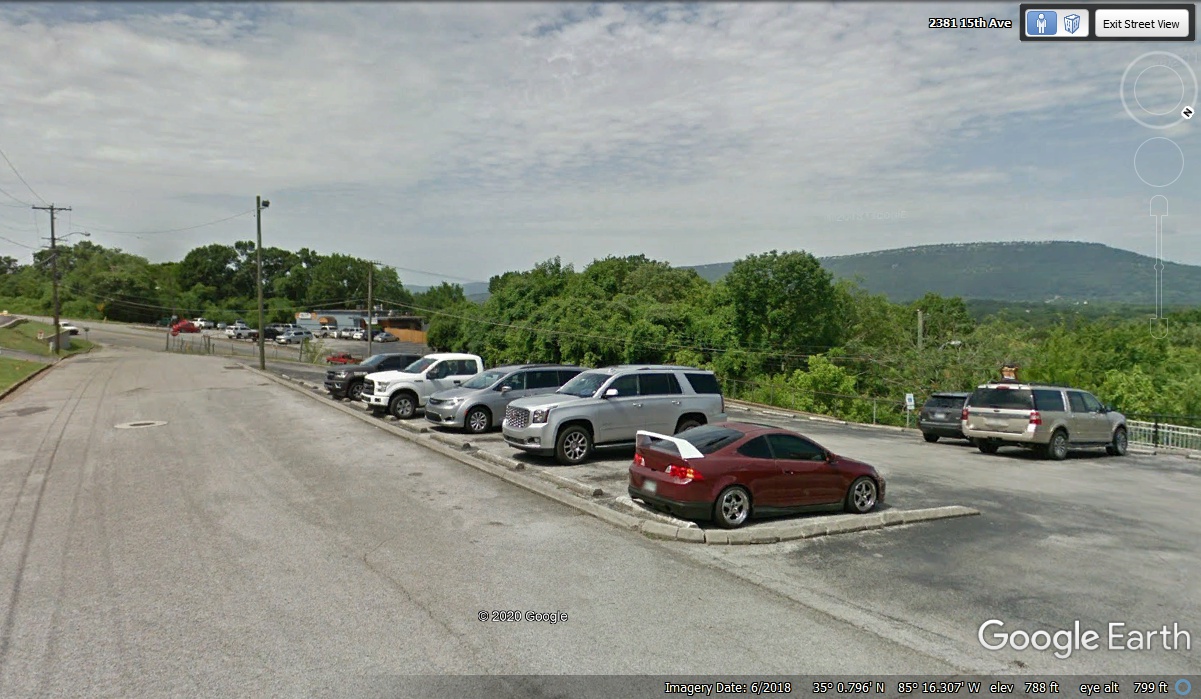
Chattanooga Area Locations · · PAGE 17.
November 18, 2020: Wednesday continues
our visit to Chattanooga heading across town via 23rd Street parallel to
Interstate 24. While "driving" down US 41 in Google Earth, I
noticed their camera vehicle had driven up this access road to an older motel
and restaurant half way up the west side of Missionary Ridge. This place
has a good view of the Chattanooga skyline that is dominated by Lookout
Mountain seen here on the right side of this image. I have never actually
been to this location in my car in all the years I lived in this area.
That is US 41 at the end of the road at the left side of this image.

This side view of the Sugar's RIBS restaurant has an excellent view of the city
and Signal Mountain near the center of this image where the TV and FM radio transmitters are
located.
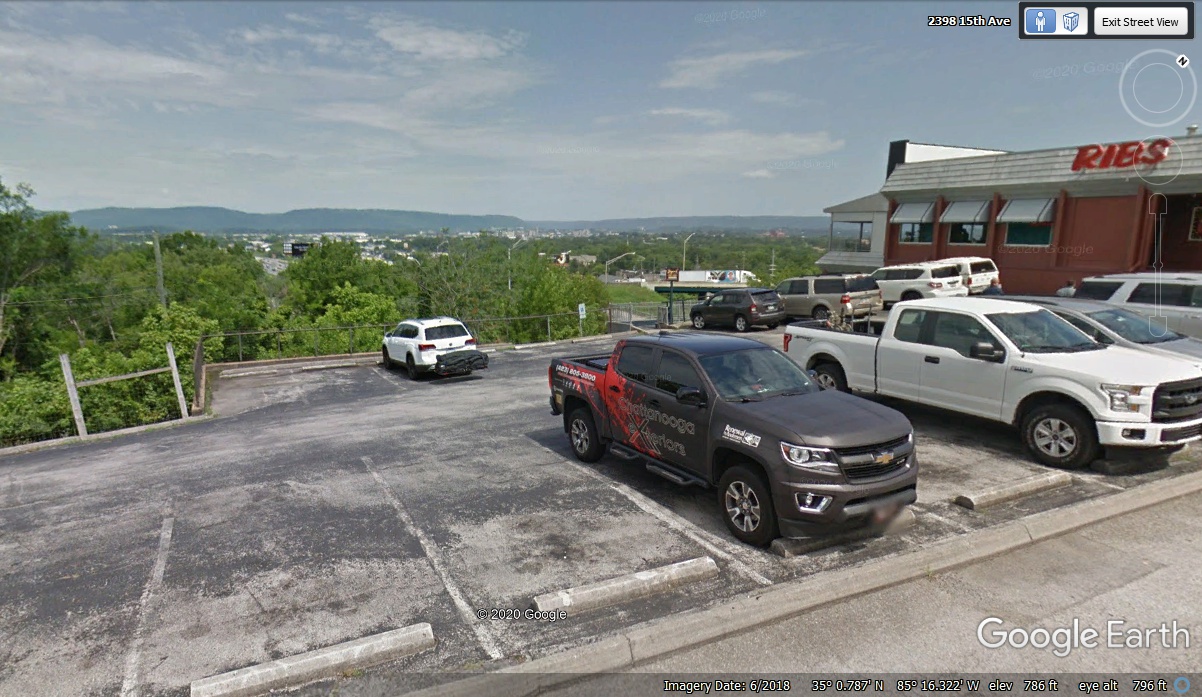
This is an aerial view of US 41 connecting to the Bachman Tubes tunnel
coming into Chattanooga at the west side of Missionary Ridge. South Crest Road was
where we took photos seen at the top of page 16. The image above
this one is the view from where the Google Earth man is standing in the parking
lot of Sugar's Ribs. The old motel is now Mission Ridge Apartments with the
address of 2450 15th Avenue.
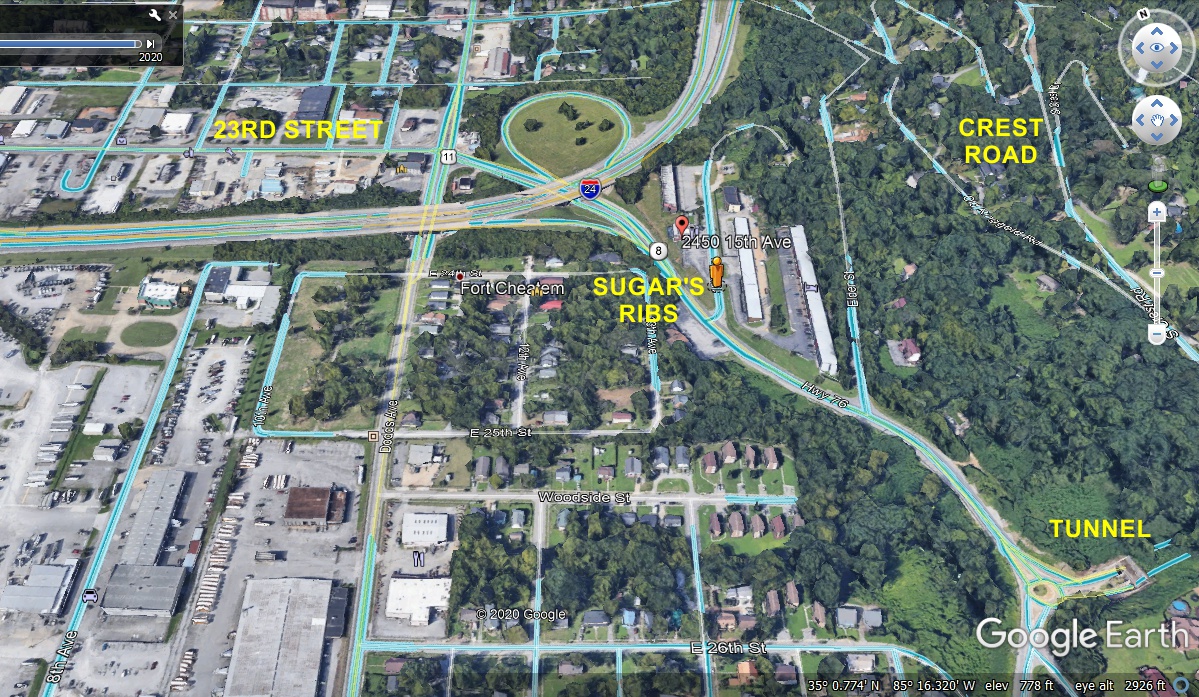
US 41 and US 76 get to the bottom of the hill from Missionary Ridge and turn right to work their
way up to mid-town Chattanooga where US 76 ends and US 72 begins heading west across
Alabama and Mississippi going to Memphis, Tennessee. We will catch up to
them as we head toward Lookout Mountain. Our route today is straight ahead
on 23rd street. US 11 and US 64 have come down into the northeast side of
Chattanooga alongside I-75. Those routes came through the newer 1929 McNally tunnel
under Missionary Ridge, then turned south on Dodd's Avenue parallel to the ridge
until reaching this intersection,
then turning west across town on 23rd street.
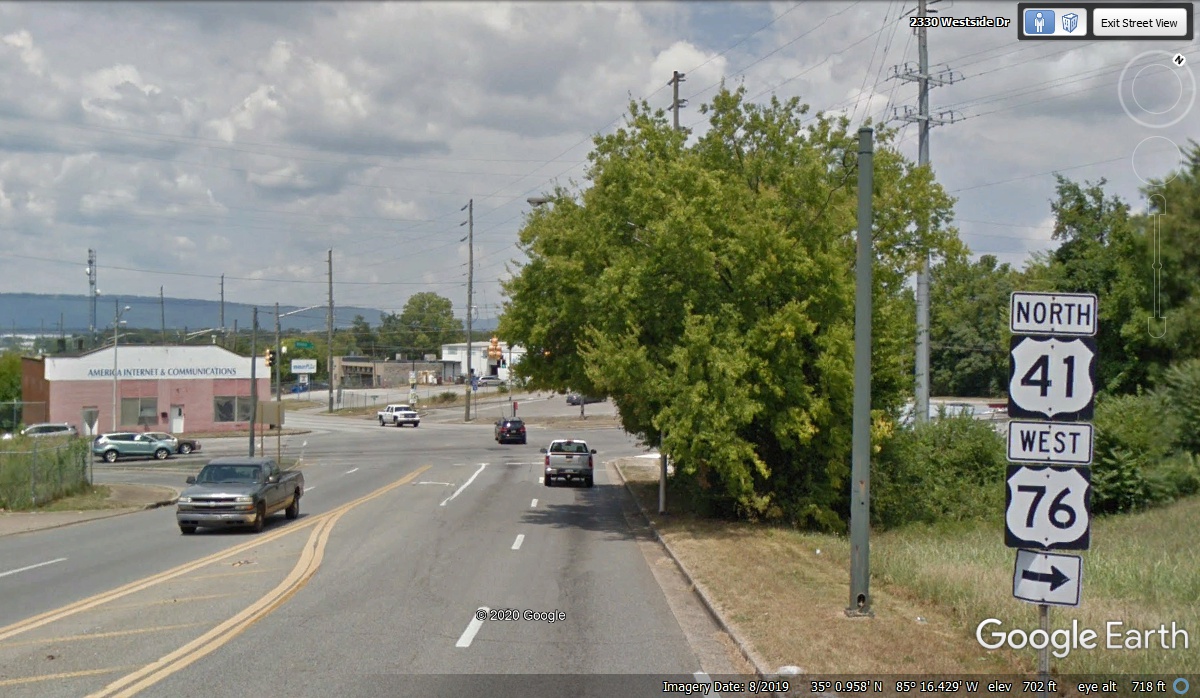
Before I-24 was completed and opened for traffic in December 1966, this
route on 23rd street was the truck bypass around the heart of the City of
Chattanooga. All the big trucks would come this way and so did we when we
were going to see my grandparents who lived in Dade County, Georgia. That
is the most northwestern county of Georgia that meets up with Alabama and Tennessee. We
will not be going that far today. I have a personal note about the opening
day for Interstate 24 through Chattanooga. The opening ceremony was held
at 12 noon. We used the new section of highway at around 5 PM that
day. It was Friday, December 18, 1966 when I started my first trip to
California with my mother and the younger brother of my future wife.
That's another story for another time.
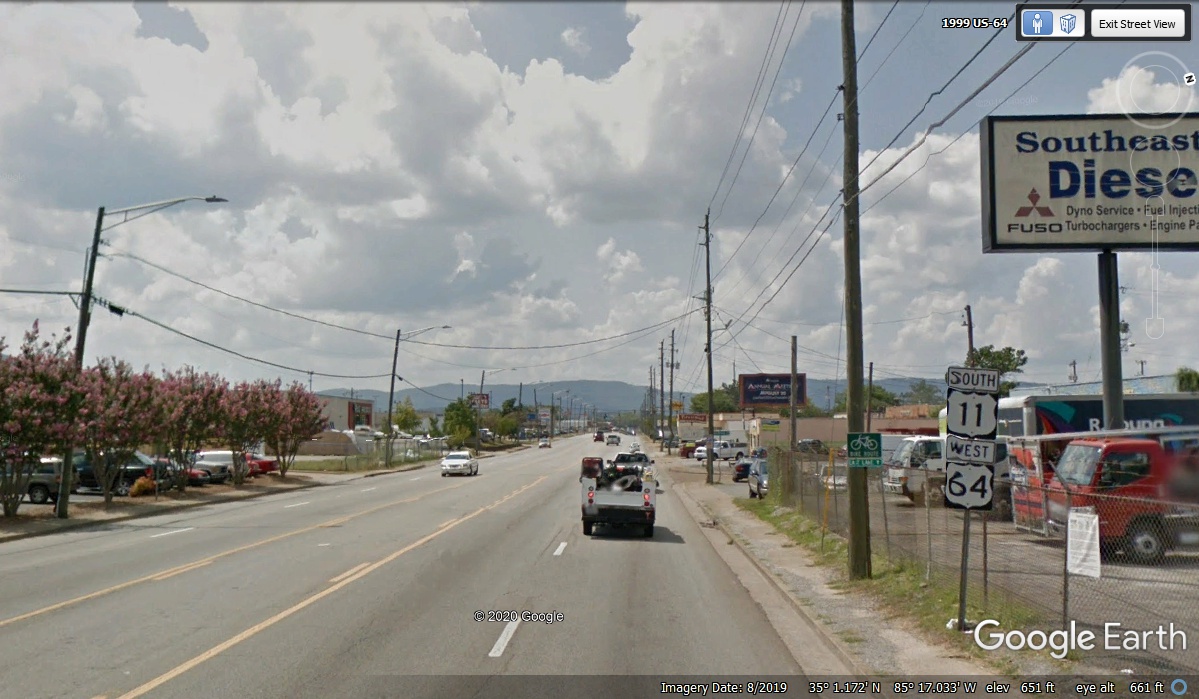
US 11 and US 64 continue across this intersection where you can see a
right turn path ahead disappearing behind the trees where 23rd street was curved
to run alongside I-24 before making a turn to connect to the south end of
Washington Street at the intersection with 20th street. US 11 and US 64 go
west on 20th street to Broad Street where these routes join with US 41 and US 72
going south on Broad Street. The BLUE line in this image is my GPS track showing
our route today. The intersection seen here is Rossville Boulevard which was US 27 before
I-24 was opened. The time was 9:26 AM when we started toward mid-town
Chattanooga going north from this intersection.
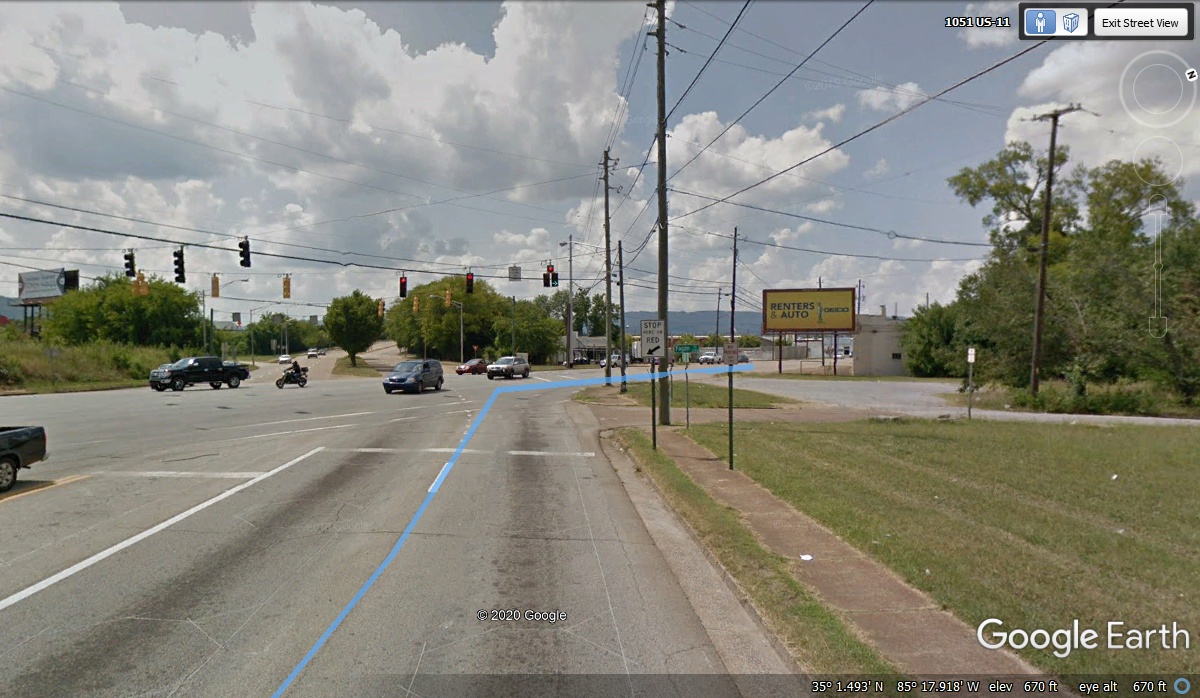
Rossville Boulevard used to go beyond the railroad tracks ahead that
created a dead end street. The traffic now goes north on Central Avenue as
seen here with our GPS track showing we also went in that direction. There
are still some private homes at this end of Central avenue, but most of this
street going north is all commercial buildings.
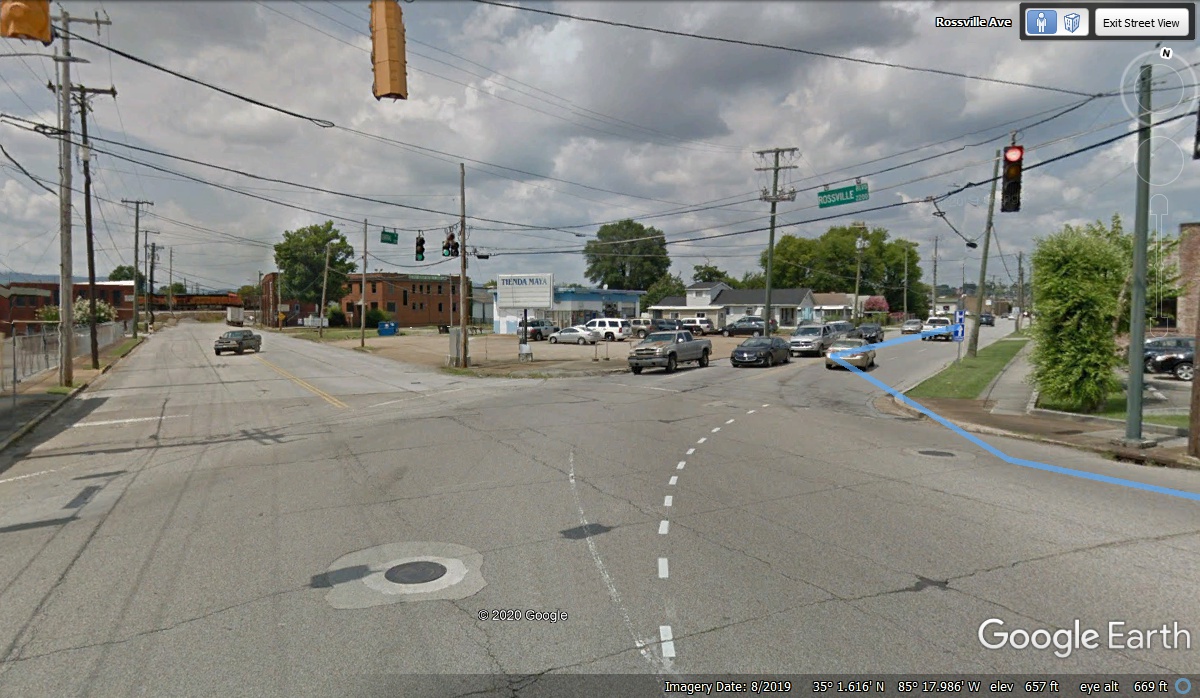
Main Street is US 41 coming across town and we are following it to get to
the marked US 41 route leaving the mid-town area.
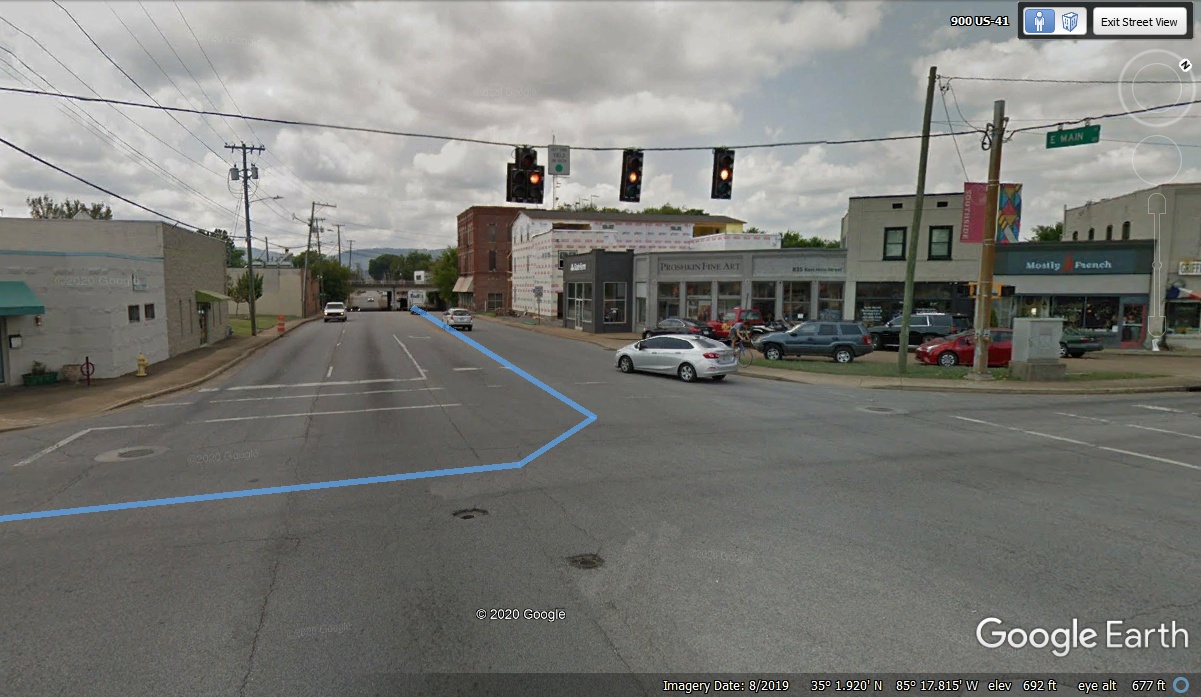
Market Street heads toward downtown. Along the way, Market Street
passes the old Terminal Station that was associated with Southern Railway in
the days before the jet age put an end to passenger trains, all except for
Amtrak. The two blue lines indicate I went north on Market Street and
returned this way coming south. This diversion is to show Linda a bit of the city
ahead that is off the marked US Routes.
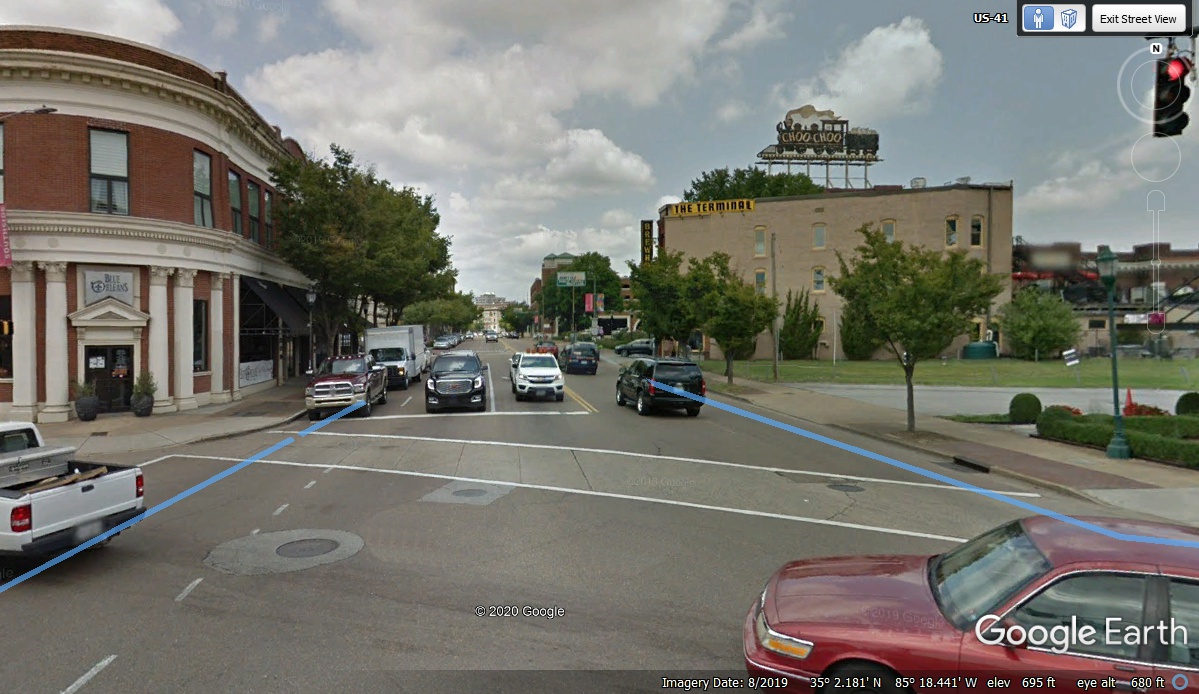
This is Terminal Station near downtown Chattanooga. Today it is
known to tourists and locals alike as "The Chattanooga Choo Choo"
named for the 1941 song from the Glenn Miller big band. Construction on
this station was started in 1906. The details about this historic building
are documented in this Wikipedia
article. It is a hotel for tourists and train fans to sleep in refurbished Pullman railway sleeper cars
today. These railway cars were used when overnight travels by train were
common before the JET AGE ended passenger rail service.
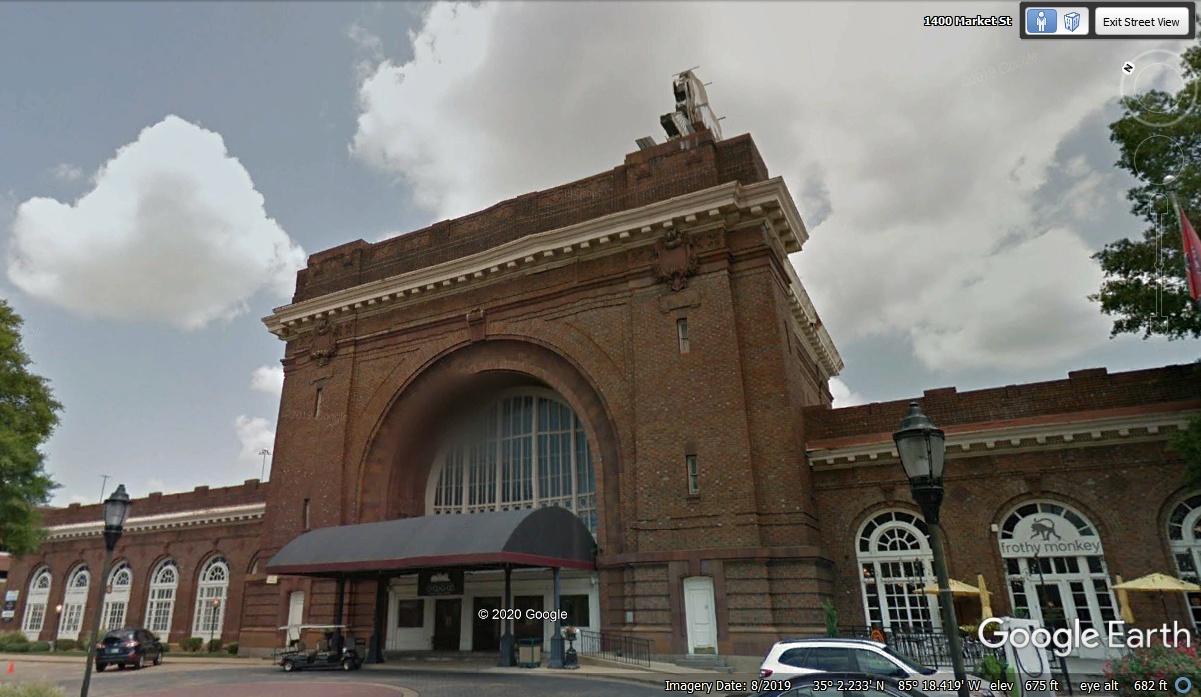
There was also another earlier train station in Chattanooga known as UNION STATION. I had a chance to ride on a train from Dalton, Georgia to Danville, Illinois when is was 12 years of age in the summer of 1959. That passenger train had a name and was called the "Georgian". It passed through Union Station on the way from Atlanta to Chicago. Union Station has history back to 1858 and was owned by the Western and Atlantic Railway, a company owned by the State of Georgia. You can learn about that train station from this Wikipedia article. The Union Station was torn down in 1972. Railroads today are all about freight service.
This intersection is where US 41 NORTH turns south on Broad Street
which comes south from the heart of the city going toward the base of Lookout Mountain. At
that point, US 41, US 64, US 72, and US 11 turn north around the East and North
sides of Lookout Mountain before leaving the Chattanooga area. The US 41
sign seen here at one time had a US 76 ENDS sign posted here. US 72 going
west begins with US 41 NORTH that is going south on Broad Street. US 11 and US
64 coming across 23rd street were moved over to 20th street for the connection
with US 41 and US 72 heading toward Lookout Mountain on Broad Street. The
west end of 23rd street was destroyed when Interstate 24 was built.
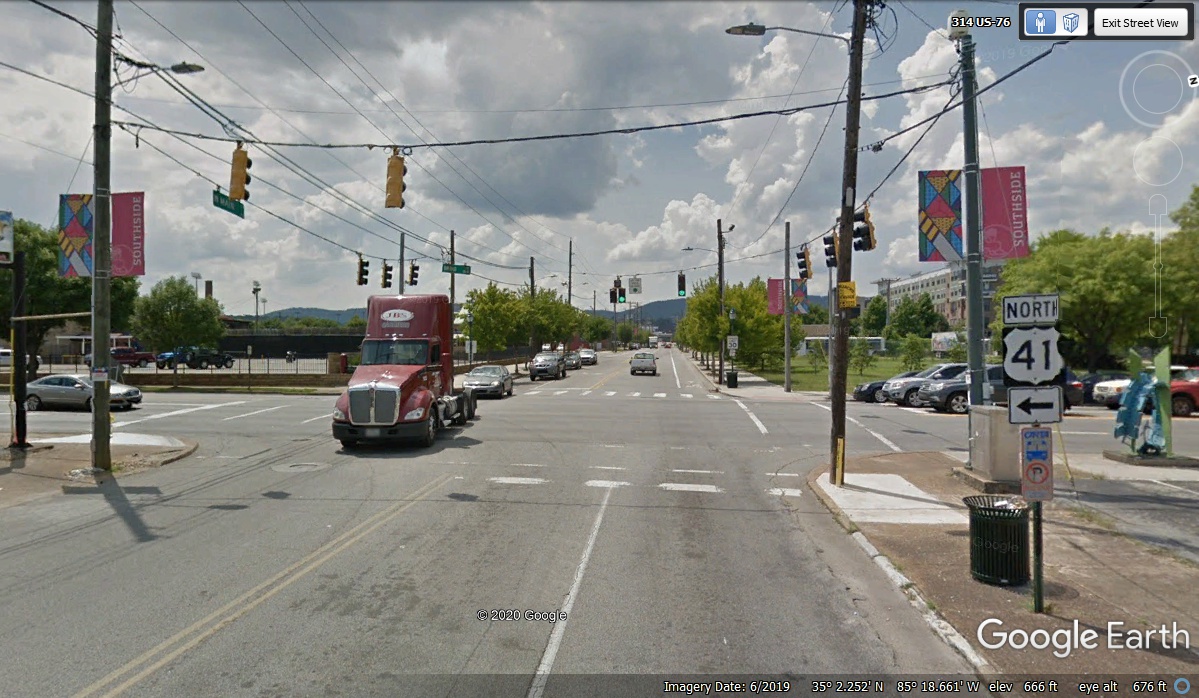
Down at the south end of Broad Street is where FOUR US highways pass under
a low railroad bridge before climbing up on the side of Lookout Mountain.
Since the modern day long distance freight trucks have trailers that are 13 feet 6
inches high, they cannot get through this underpass. Most of that truck
traffic is out on Interstate 24 completed in 1966 between the railroad
tracks and the Tennessee River, on this side of the mountain.
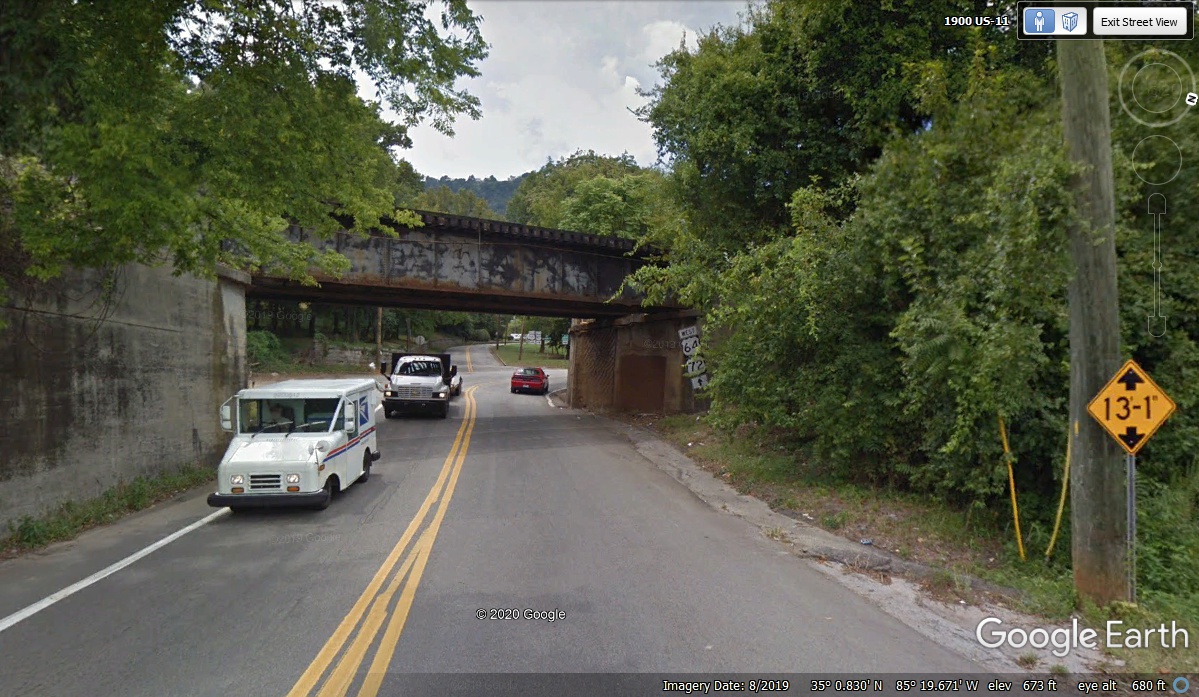
Traffic coming on the other side of the low railroad underpass sees these route
markers just before the road goes under the railroad bridge. The sign with
"VEHICLES OVER 13' 1" points the tall trucks to a bypass route around
this bridge. Trucks go up the hill one block to a
street that goes around this obstacle. There is one bit of Google Earth information in
this photo about the street name "Old Wauhatchie Pike" located to the
left of the white "Exit Street View" box. It was
the original two-lane US highway route before 1937 when this four-lane highway
was built at a lower level on this side of Lookout Mountain.
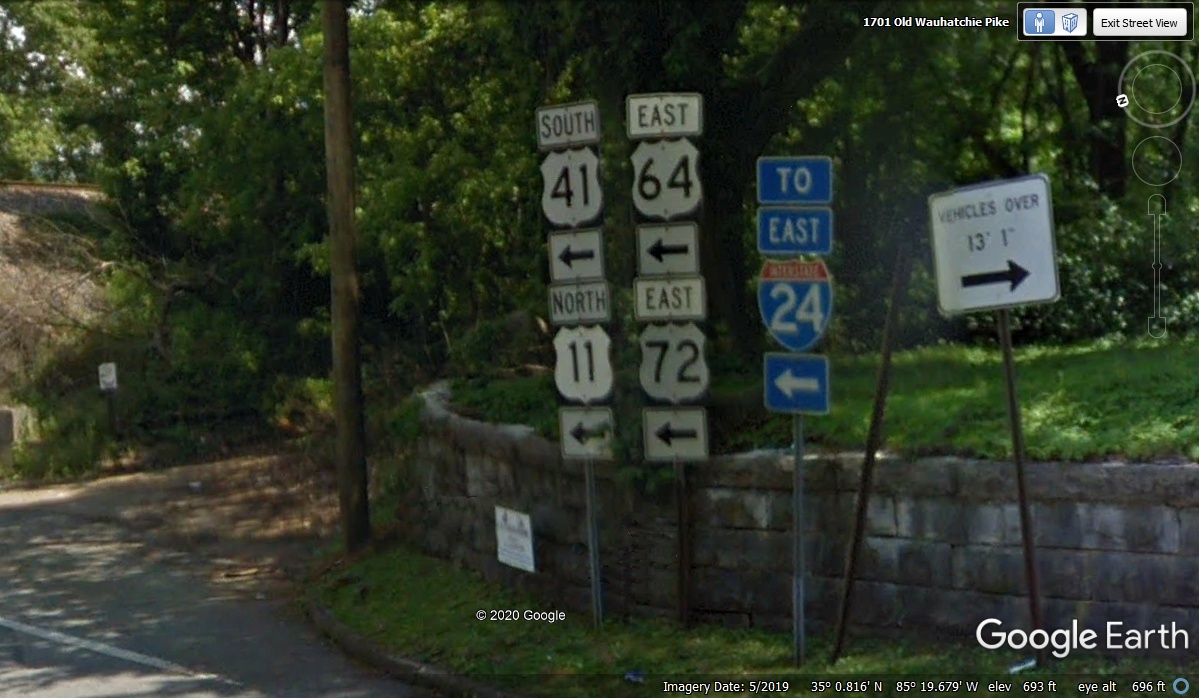
The other end of the truck bypass around the low railroad bridge is seen
on the left side of this image. That road is Saint Elmo Avenue which leads
to a residential area of Chattanooga that is known as Saint Elmo. The
lower terminal of the Incline Railway is 3-tenths of a mile down that
road. About 2-tenths of a mile is the bypass street that connects back over to
the US highways on the other side of the low railroad bridge underpass seen on
the right side of this photo. Mystery solved about how the big
trucks get around the low railroad bridge.

I have been up this road many times, this is the first time I noticed the
sign "Lookout Mountain Parkway." This is the view looking north
from the signs seen in the photo above.
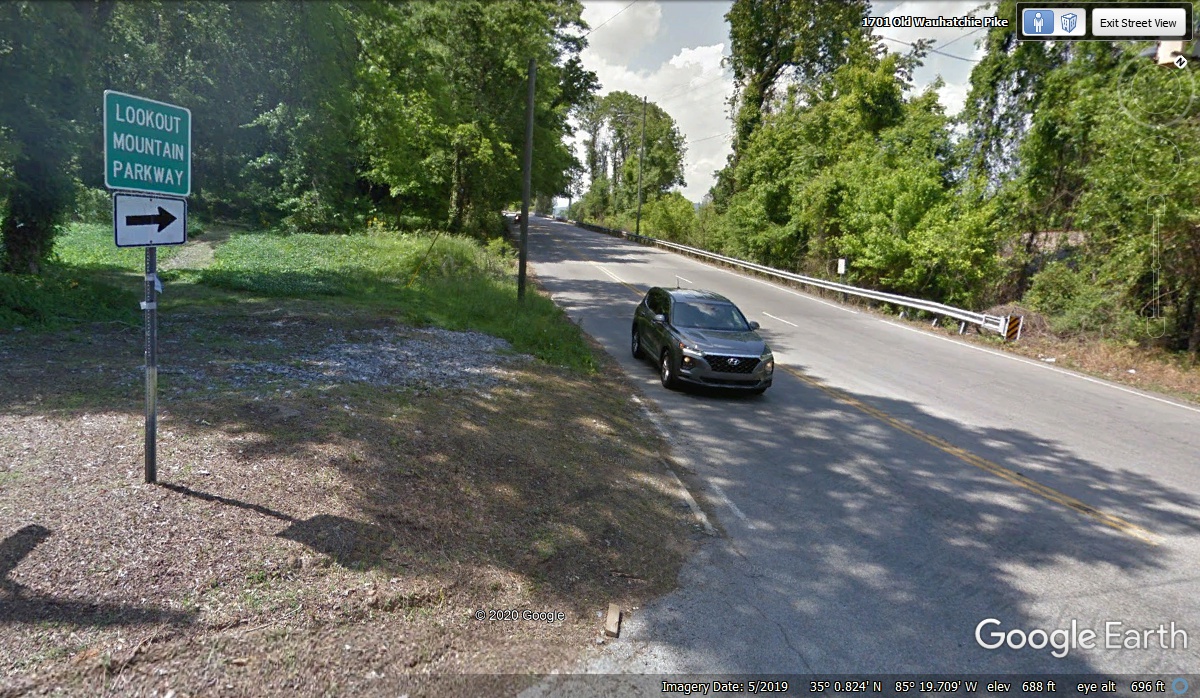
The Tennessee River below is usually 660 feet above sea level. The
water level is controlled by the dams of the Tennessee Valley Authority (TVA). When
I-24 was built, the north side of the river banks were transferred to the south
side along with tons of granite rocks to build the roadbed for the interstate
highway. The railroad tracks have been there for many years before I-24
was built. The buildings of downtown Chattanooga are seen beyond the bend
of river as it goes out of view behind the trees on the north bank of the river. Missionary Ridge is the horizon on the right side of this
image. At the bottom of this image is the ever-present KUDZU close to this
road and up into the trees.
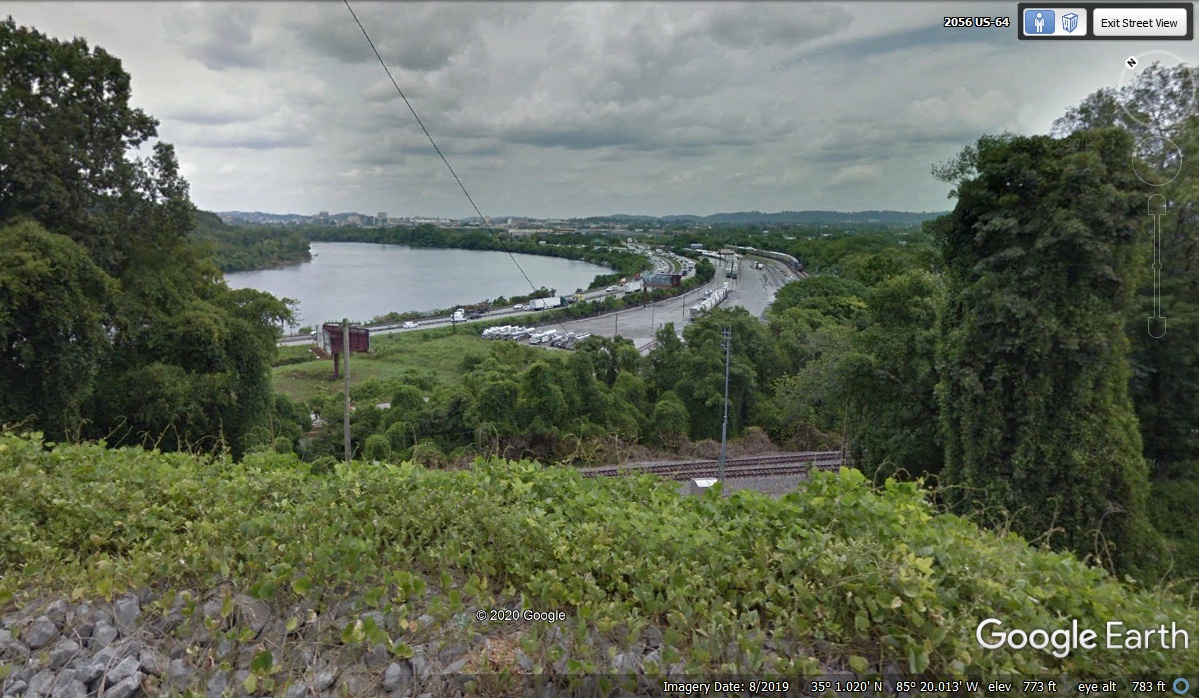
This four-lane US highway has connecting roads to go up to the top of Lookout Mountain.
This one is carrying all FOUR US routes on the highway that is shown here going around the
mountain. Today, we are going up this route on the left to get to the top of Lookout
Mountain. There is a second road on the north end of the mountain going up
from this four-lane highway.

When I was a boy in the 1950's traveling on the four-lane road toward my
grandmother's house, the trees on the right side of the highway were not as tall
as they are in 2020. The other thing about the 1950's was the presence of
real telephone poles, not power poles very near to the four-lane
roadway. Look closely at the concrete retaining wall of the right lane,
this is a long bridge tied to the mountain side by concrete pilings below the
roadway. The two-lane road we are taking to start climbing Lookout
Mountain is on terra firma, not a bridge.
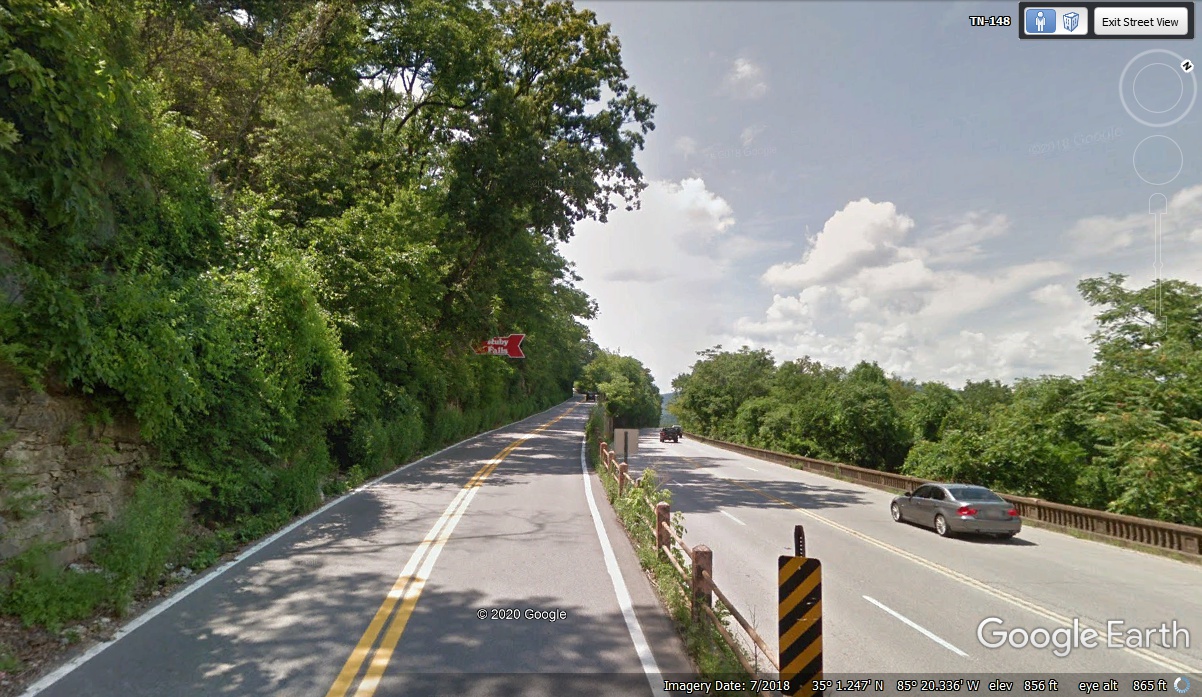
This post card photo from W.M. Cline is from the year 1937 showing this
four-lane highway when it was new. The trees were much shorter than they are
now. Those old telephone poles on the left of this image with glass insulators securing the wires
have been obsolete ever since large bundles of insulated copper wires became the
standard for the phone companies. There are still a lot of those big black
cables on the poles today in towns across the country. The new fiber optic cables became the way to
get signals out to the neighborhoods where only the last mile to the homes uses
copper wires now. Fiber to the home is available in some areas that will
provide new services not possible over copper wires. The railroad tracks
on this side of the river are blocked from view by the trees back in 1937.
Of course, the Interstate Highway was not there until the 1960's.
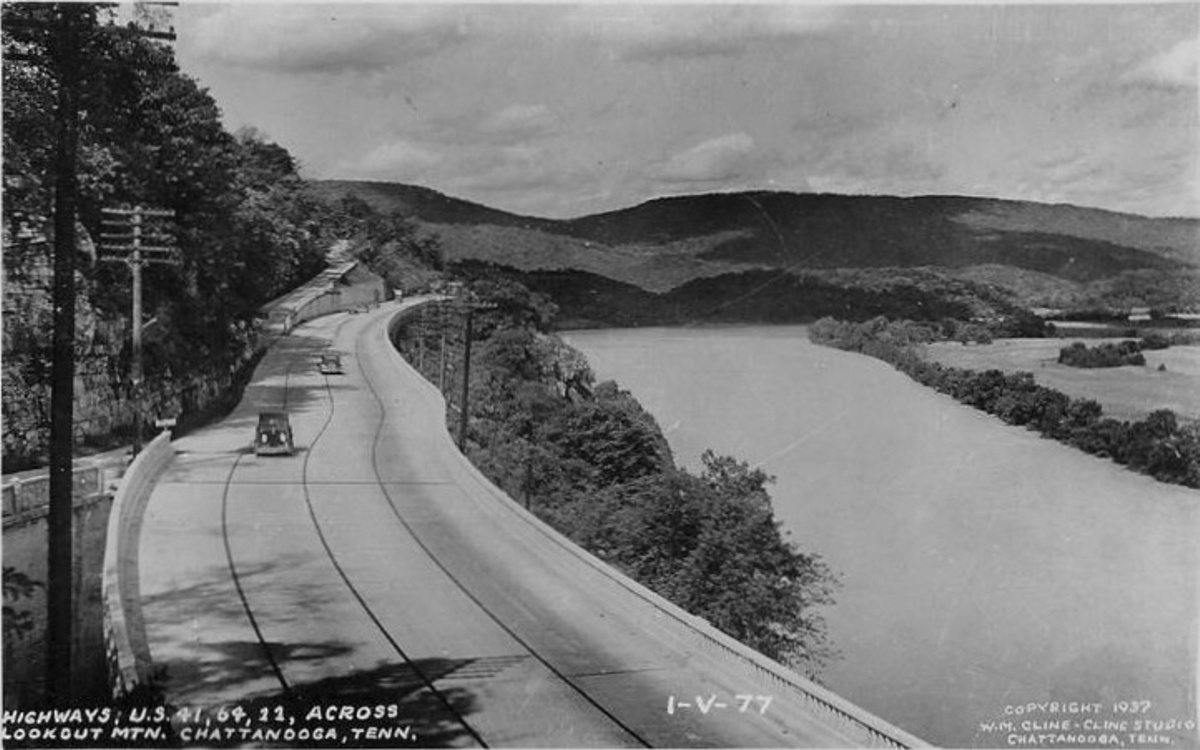
Whether you go up the mountain from the East side from US 41 or
from the north side of Lookout Mountain, this intersection about half way up to
Ruby Falls is along the way. This image is approaching from the
North. The cross road from the left that does not stop here comes up from
the four-lane highway seen two photos above this one. The road going straight across is
"Old Wauhatchie Pike." That road was closed off about half way
from the railroad underpass with some houses also remaining on that road near
this end and near the south end. The road from where this image was created is
also part of "Old Wauhatchie Pike" going north from here as Tennessee
route 318 eventually to US 41, US 64, US 11, and US 72.
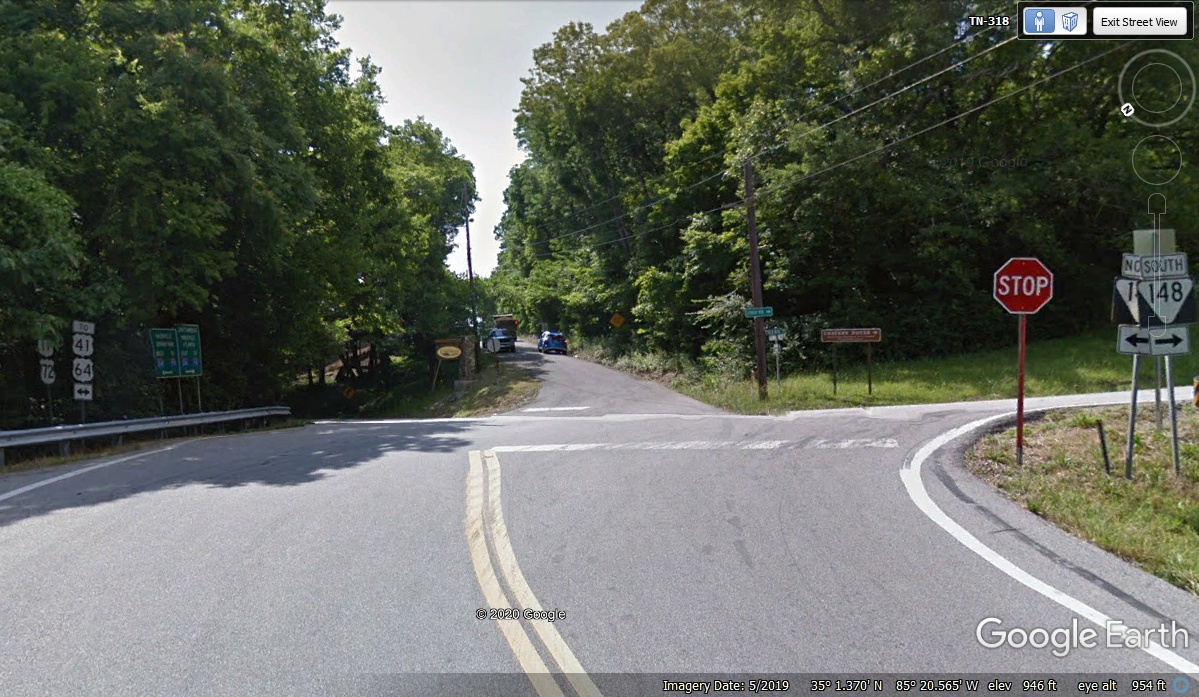
This is the route up to Ruby Falls from the north side of Lookout Mountain
starting at the RED SIGN on the four-lane highway. It is the end of the two-lane
road seen in the image above this one.
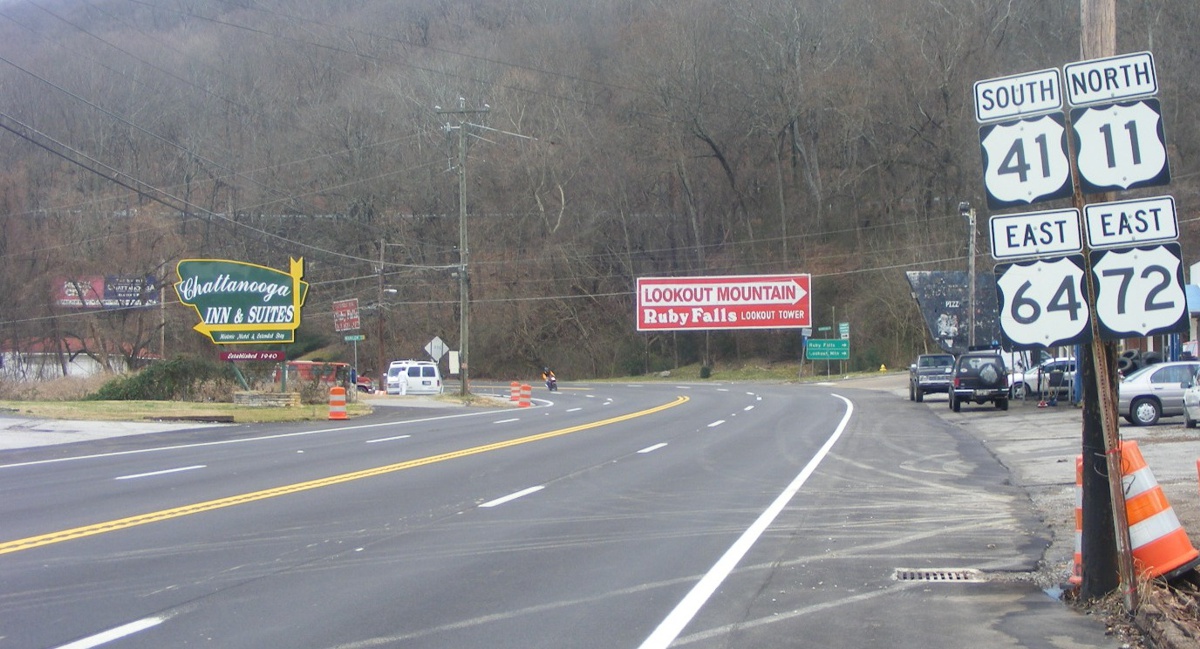
Taking the right turn from the intersection in the second photo above will
take you up to the RUBY FALLS attraction as seen in this image below from Google
Earth on Tennessee state route 148. The total distance from US 41 the way
we came up from the East side of the mountain is only 0.65 miles to Ruby Falls.
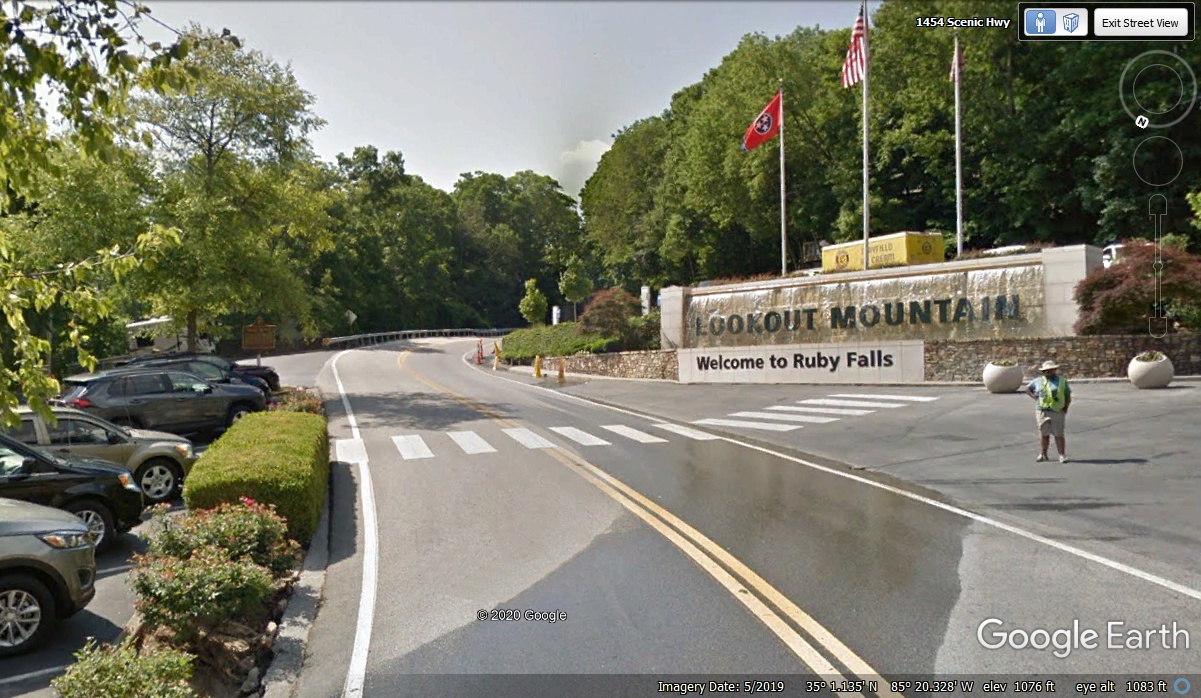
I took this photo on January 23, 2010 standing in the parking lot across
from the Ruby Falls sign on Scenic Highway route 148 that goes up to the top of
Lookout Mountain.
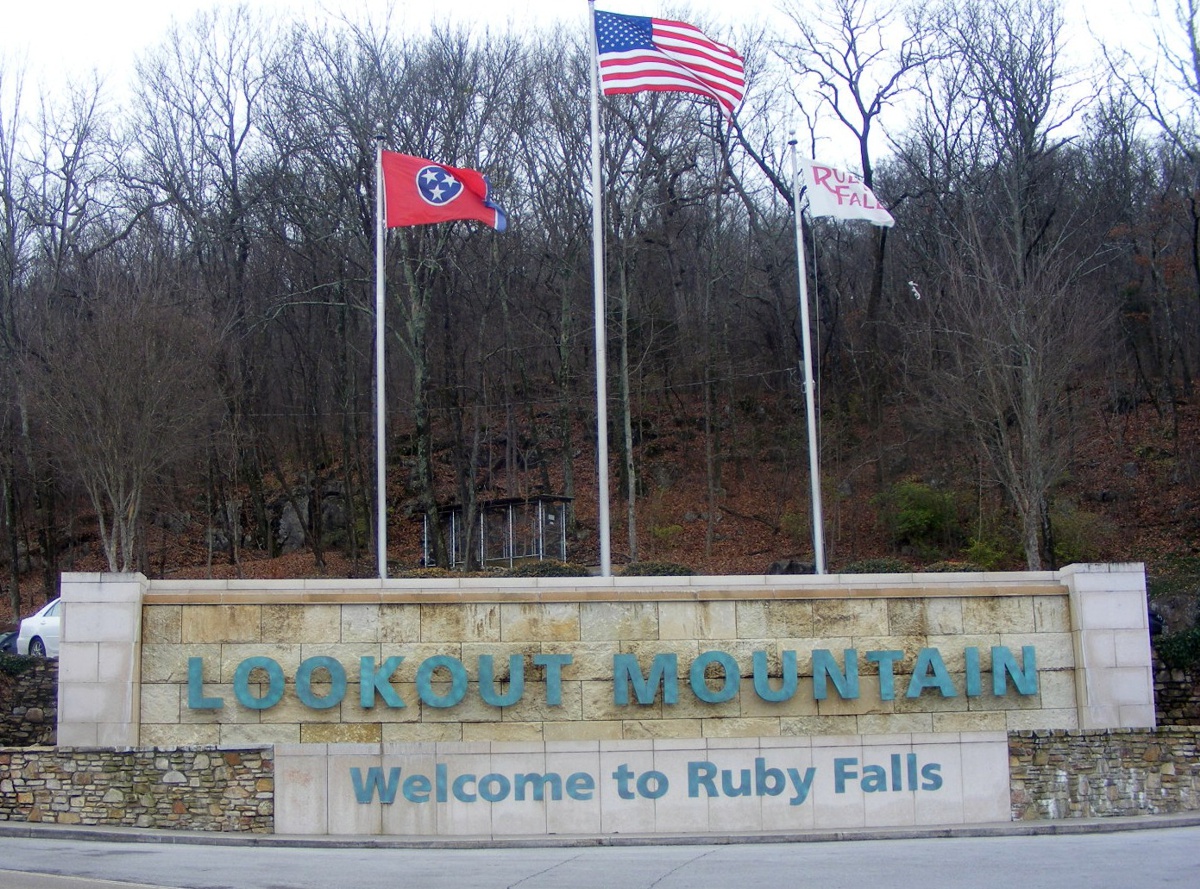
This is their main building just north of the sign and flags from the
photo above. The entrance to the cave and the waterfall inside the
mountain is via that building..
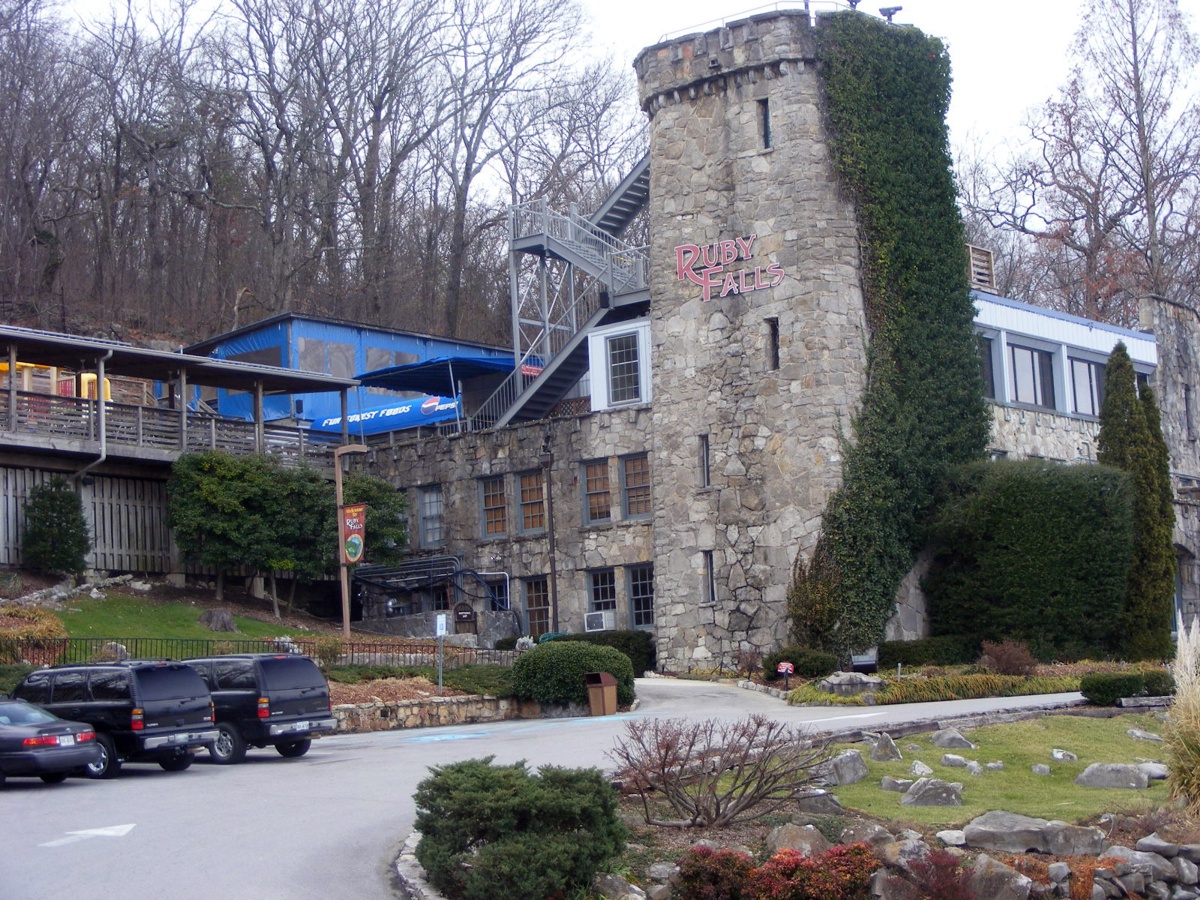
| LOOKOUT MOUNTAIN, TENNESSEE - - PAGE 18. | RETURN TO 2020 VACATION MENU |